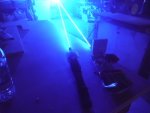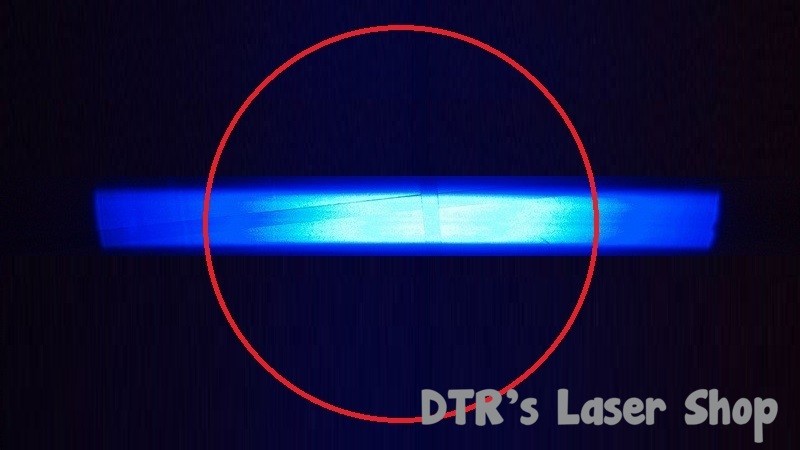Thank you Alan, very helpful!

A few test results:
I bought the driver set @ 4500mA and it was already soldered to the diode when it arrived.
I was playing with the laser this afternoon and decided to add an ammeter (multimeter) between the driver and the diode.
Lab supply was set @ 8.0V and deliverd 2.4-2.5A (I set voltage, current is left unlimited.)
Surprisingly the multimeter reads 3.6xx mA to the laser diode.
I don't know why that is. I'm not accusing anyone, maybe I touched the potmeter with my fingers when handling it.
I soon realized that increased temperature on the driver gives a higher amperage to the laser.
With a little screwdriver I set the driver @ 4.1xx mA (and I realized how sensitive that potmeter is)
Amperage quickly ramps up. After ~5 minutes the driver delivers 4.620mA and the 445gram module is 51degree Celsius (123.8 degrees Fahrenheit). Measured with IR-thermometer gun pointed close to a piece of black tape that I added to the heatsink. Room temperature is 26 degree Celsius (78.8 degrees Fahrenheit, yes its a nice summer here

)
Lab supply was of course still set @ 8.0V and delivered 3.0 Amps near the end
I disconnected power.
And reconnect after ~1 minute with the heatsink still quite warm and driver having the same temperature as the heatsink now.
It takes 1-2 minutes for the driver to start from 4.1xx mA and ramp up to +4.6xx mA.
Kind of a heat-sensitive driver, right?
I hope it's not that little aluminium holder that is causing it.
I will make one out of plastic tonight.
Any thoughts?








